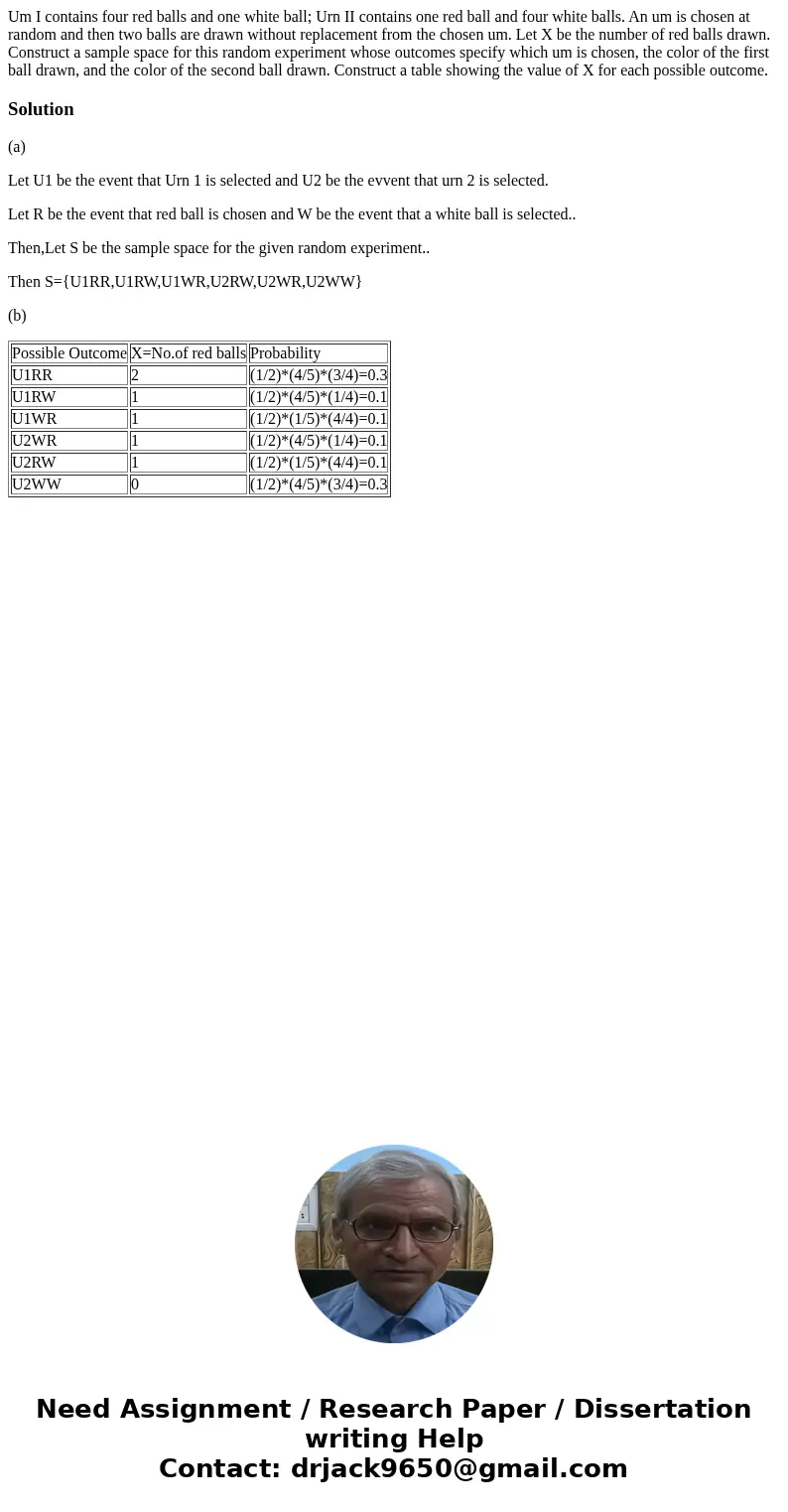Um I contains four red balls and one white ball Urn II conta
Um I contains four red balls and one white ball; Urn II contains one red ball and four white balls. An um is chosen at random and then two balls are drawn without replacement from the chosen um. Let X be the number of red balls drawn. Construct a sample space for this random experiment whose outcomes specify which um is chosen, the color of the first ball drawn, and the color of the second ball drawn. Construct a table showing the value of X for each possible outcome.

Solution
(a)
Let U1 be the event that Urn 1 is selected and U2 be the evvent that urn 2 is selected.
Let R be the event that red ball is chosen and W be the event that a white ball is selected..
Then,Let S be the sample space for the given random experiment..
Then S={U1RR,U1RW,U1WR,U2RW,U2WR,U2WW}
(b)
| Possible Outcome | X=No.of red balls | Probability |
| U1RR | 2 | (1/2)*(4/5)*(3/4)=0.3 |
| U1RW | 1 | (1/2)*(4/5)*(1/4)=0.1 |
| U1WR | 1 | (1/2)*(1/5)*(4/4)=0.1 |
| U2WR | 1 | (1/2)*(4/5)*(1/4)=0.1 |
| U2RW | 1 | (1/2)*(1/5)*(4/4)=0.1 |
| U2WW | 0 | (1/2)*(4/5)*(3/4)=0.3 |

 Homework Sourse
Homework Sourse